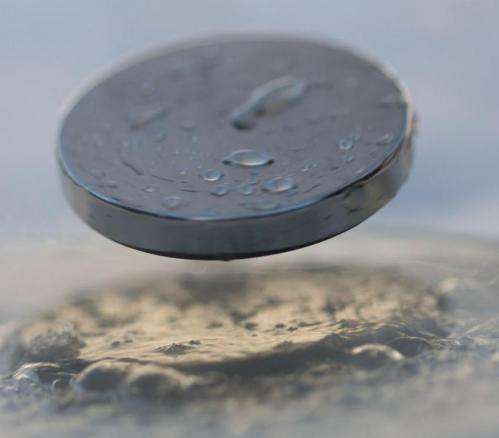May 5, 2014 report
Best of Last Week – Star Wars shield possible, new element confirmed and brain based microchip

(Phys.org) —Serious physics research has been in the news a lot this past week. First up: Researchers in Germany have set the stage for the introduction of a new super-heavy element to the periodic table after confirmation of superheavy element 117. Also, in the U.S., scientists watched as high-temperature superconductivity emerged out of magnetism—they demonstrated how high-temperature superconductivity emerged out of magnetism in a particle of iron—a first. Physicists the world over celebrated (and possibly breathed a sigh of relief) as news of the first rigorous formulation supporting Heisenberg's famous 1927 principle by a small but varied team of researchers, who came up with a new way of defining measurement errors.
In other news, a team of researchers working in Arizona announced: Mystery of the pandemic flu virus of 1918 solved. It arose, they claim, due to genetic material from a bird flu virus being introduced into the same person that already had an existing flu variant—the result was a pandemic that killed millions. Sadly, there's nothing stopping it from happening again.
It was a good week for new technology advances as well; at the University of Leicester physics students devised a concept for Star Wars-style deflector shields—they've proven that the kinds of shields used in the Star Wars movies are scientifically feasible. Meanwhile, at Stanford University, Scientists created a circuit board modeled on the human brain—it has energy-efficient microchips that run 9000 times faster than the typical chips in a desktop computer, approaching the speed at which our own brains operate. And speaking of the brain, a team working for DARPA has announced that a brain implant to restore memory is coming soon. It's a tiny chip the army wants to help restore memory loss in injured soldiers.
Also, many people might be interested in knowing that a study reveals a way to improve chances of winning at rock-paper-scissors. The team in China filmed a crowd of volunteers playing the famous hand game and discovered that there is something people do that can give opponents a slight edge—if they know about it.
And finally, an homage of sorts, as researchers in Britain have found that a mother's diet affects the 'silencing' of her child's genes. What a pregnant woman eats, they found, can have a profound impact on gene function in the baby she's carrying. Something those in the U.S, may want to ponder as we approach Mother's Day this Sunday. It might be a good time to send Mom a card, or something.
© 2014 Phys.org




















